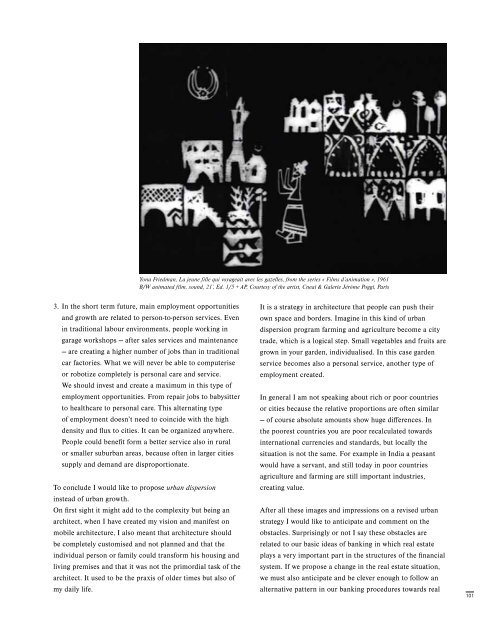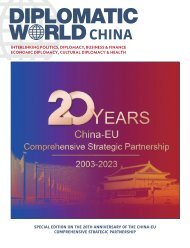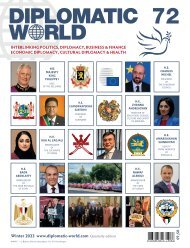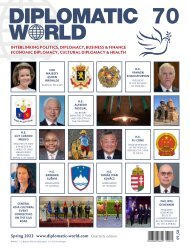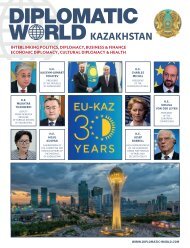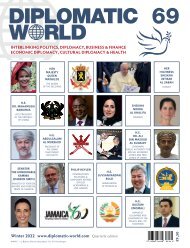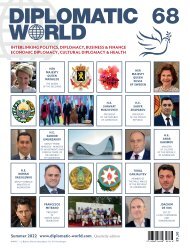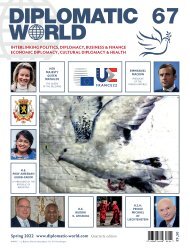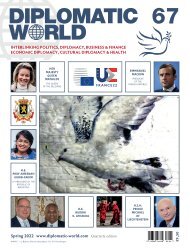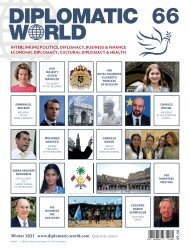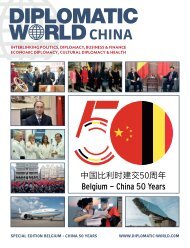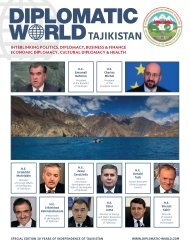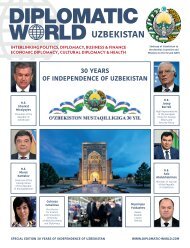Diplomatic World nummer 54
You also want an ePaper? Increase the reach of your titles
YUMPU automatically turns print PDFs into web optimized ePapers that Google loves.
Yona Friedman, La jeune fille qui voyageait avec les gazelles, from the series « Films d’animation », 1961<br />
B/W animated film, sound, 21’, Ed. 1/5 + AP, Courtesy of the artist, Cneai & Galerie Jérôme Poggi, Paris<br />
3. In the short term future, main employment opportunities<br />
and growth are related to person-to-person services. Even<br />
in traditional labour environments, people working in<br />
garage workshops — after sales services and maintenance<br />
— are creating a higher number of jobs than in traditional<br />
car factories. What we will never be able to computerise<br />
or robotize completely is personal care and service.<br />
We should invest and create a maximum in this type of<br />
employment opportunities. From repair jobs to babysitter<br />
to healthcare to personal care. This alternating type<br />
of employment doesn’t need to coincide with the high<br />
density and flux to cities. It can be organized anywhere.<br />
People could benefit form a better service also in rural<br />
or smaller suburban areas, because often in larger cities<br />
supply and demand are disproportionate.<br />
To conclude I would like to propose urban dispersion<br />
instead of urban growth.<br />
On first sight it might add to the complexity but being an<br />
architect, when I have created my vision and manifest on<br />
mobile architecture, I also meant that architecture should<br />
be completely customised and not planned and that the<br />
individual person or family could transform his housing and<br />
living premises and that it was not the primordial task of the<br />
architect. It used to be the praxis of older times but also of<br />
my daily life.<br />
It is a strategy in architecture that people can push their<br />
own space and borders. Imagine in this kind of urban<br />
dispersion program farming and agriculture become a city<br />
trade, which is a logical step. Small vegetables and fruits are<br />
grown in your garden, individualised. In this case garden<br />
service becomes also a personal service, another type of<br />
employment created.<br />
In general I am not speaking about rich or poor countries<br />
or cities because the relative proportions are often similar<br />
— of course absolute amounts show huge differences. In<br />
the poorest countries you are poor recalculated towards<br />
international currencies and standards, but locally the<br />
situation is not the same. For example in India a peasant<br />
would have a servant, and still today in poor countries<br />
agriculture and farming are still important industries,<br />
creating value.<br />
After all these images and impressions on a revised urban<br />
strategy I would like to anticipate and comment on the<br />
obstacles. Surprisingly or not I say these obstacles are<br />
related to our basic ideas of banking in which real estate<br />
plays a very important part in the structures of the financial<br />
system. If we propose a change in the real estate situation,<br />
we must also anticipate and be clever enough to follow an<br />
alternative pattern in our banking procedures towards real<br />
101


